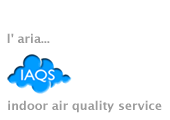What is
Volatile organic compounds (VOC) are a set of substances in the form of liquid or steam. The most common compounds are the aliphatic and aromatic hydrocarbons, terpenes, chlorinated hydrocarbons, the alcohols, esters, ketones and aldehydes (including formaldehyde).
Sources
VOCs are found in a wide range of products including: paintings, lacquers, pesticides, cleaning products, building materials, Office materials such as adhesives, markers, printers, photocopiers, etc..
Legislation/Standards
There are no standard limits, but European and Italian legislation show increasing attention as demonstrated by Dir. 2004/42/EC of the European Parliament and of the Council on the limitation of emissions of volatile organic compounds due to the use of organic solvents in certain paints and varnishes and vehicle refinishing products and amending Directive 1993/13/EC. The directive was implemented in Italy with legislative decree. n. 161 the 27/3/2006 (Implementation of Directive 2004/42/EC on the limitation of emissions of volatile organic compounds due to the use of solvents in certain paints and varnishes, and body products).
Damage caused
The acute effects associated with exposure to VOCs are eye irritation, nose and throat, headache, nausea, fatigue. Chronic effects include kidney damage, liver and central nervous system and extreme cases of cancer.
Prevention
Minimize the emission source. Increase ventilation when using products that emit VOCS. Pay attention to the instructions on product labels.






